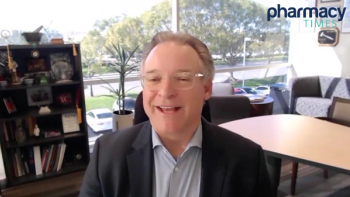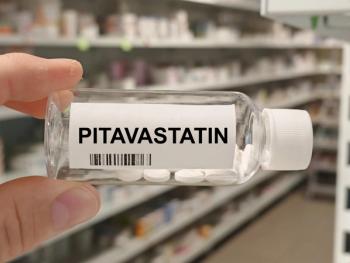
- November 2023
- Volume 89
- Issue 11
Fun Facts: Are Antacids Just Chalk?
Q: Are Antacids Just Chalk?
A: Some of the most common antacids on the market contain calcium carbonate—also known as chalk.
Thanksgiving is just around the corner. For many, that means tuning in to national parades, watching football, and indulging in a large feast with loved ones. Unfortunately, that large meal is also a common cause of heartburn, a burning pain in the chest, specifically behind the breastbone, that is often exacerbated after eating, lying down, or bending over, according to Mayo Clinic.1
“Occasional heartburn is common and no cause for alarm,” according to Mayo Clinic. “Most people can manage the discomfort of heartburn on their own with lifestyle changes and nonprescription medications.”1
There are nonprescription medicines that ameliorate symptoms, many o f which are effective because they contain chalk (calcium carbonate). Calcium carbonate is an antacid, which means that it neutralizes stomach acid to relieve heartburn. Other antacids include aluminum hydroxide, magnesium carbonate, magnesium trisilicate, magnesium hydroxide, and sodium bicarbonate.2
But what causes heartburn and why would it occur after eating a large meal? It’s important to first understand how the body works when eating. The lower esophageal sphincter (a muscle at the bottom of the esophagus) is supposed to relax when eating to allow food and liquid to enter the stomach. Then the muscle tightens after eating to pr event stomach acid from flowing back up into the esophagus.1
The stomach acid is extremely acidic; it generally has a pH o f 1.5 to 3.5.3 The stomach needs to be acidic to break down food and extract nutrients, but the acid will not break down the stomach lining , which is coated in a protective mucus. There are instances when stomach acid can weaken and break down the stomach lining, causing a stomach ulcer, in which case it is important to seek medical advice.2
If the esophageal sphincter is not working properly, stomach acid can flow from the safety of the stomach up the esophagus, which irritates the pipe lining and causes discomfort. This, in essence, explains heartburn.1
The reason heartburn is more likely to occur after a large meal (such as Thanks giving dinner) is because the stomach has expanded to let more food in. When the stomach expands, it prevents the lower esophageal sphincter from closing completely, thus increasing the risk o f acid reflux and heartburn.4
Calcium carbonate works, at least for a short while, against heartburn because it is a base on the pH scale, which ranges from 1 (most acidic) to 14 (most alkaline/basic). This can r educe possible damage caused to the esophagus and restore some semblance of balance. Chalk also alleviates heartburn because it increases gastrointestinal motility and triggers peristalsis.2,5
“When the calcium carbonate is chewed and partially digested, the free calcium stimulates peristalsis in the esophagus to move the acid into the stomach and decrease heartburn symptoms,” write the authors of a study discussing the uses for calcium carbonate.5
The occasional bout of heartburn is nothing to worry about, but long-standing and frequent heartburn or acid reflux can be a sign o f a more serious condition called gastroesophageal reflux disease, symptoms of which may include abdominal burning and pain, difficulty swallowing, cough, hoarse voice, and sore throat. Overeating can also trigger these symptoms.1,4
An antacid may alleviate symptoms. A chalk-based antacid can look like a chewable tablet, such as Tums (Haleon), which is formulated with chalk and sweetened with sugar,6 or it can be dissolved in water and taken as a liquid, with brands like Alka-Seltzer (Bayer).
REFERENCES
- Heartburn. Mayo Clinic. May 13, 2022. Accessed September 18, 2023. https://www.mayoclinic.org/diseases-conditions/heartburn/symptoms-causes/syc-20373223
- Antacids. National Health Service. Reviewed March 24, 2023. Accessed September 18, 2023. https://www.nhs.uk/conditions/antacids/
- Stomach acid test. University of California San Francisco Health. Reviewed October 27, 2018. Accessed September 18, 2023. https://www.ucsfhealth.org/medical-tests/stomach-acid-test#:~:text=Normal%20Results,%2Fhr)%20in%20some%20cases
- Thanksgiving, acid reflux, and GERD. Columbia University Irving Medical Center. November 15, 2022. Accessed September 18, 2023. https://www.cuimc.columbia.edu/news/thanksgiving-acid-reflux-and-gerd
- Fritz K, Taylor K, Parmar M. Calcium Carbonate. In: StatPearls. StatPearls Publishing; 2023. Hangley Jr, B. How Tums antacid became America’s most trusted brand. Reader’s Digest. Updated March 20, 2023.Accessed September 18, 2023. https://www.rd.com/article/tums/
Articles in this issue
about 2 years ago
Pharmacist Spotlight: Joanna Lewis, PharmD, MBAabout 2 years ago
Prescription: Beyfortus From Sanofi Pasteur, Incabout 2 years ago
Pharmacy Technician Roles Are Growing and Expandingabout 2 years ago
Three Perspectives on Pharmacy Technician Retirementabout 2 years ago
November 2023: Case Studiesabout 2 years ago
Condition State Management: Substance Abuseabout 2 years ago
Pet Peeves: November 2023about 2 years ago
OTC Case Studies: Self-Care for Oral HealthNewsletter
Stay informed on drug updates, treatment guidelines, and pharmacy practice trends—subscribe to Pharmacy Times for weekly clinical insights.














































































































































































































